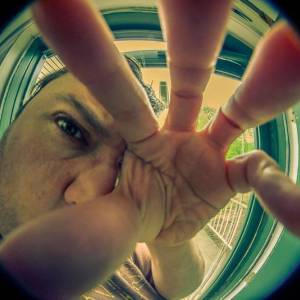Long Winded Exposure
Today pic is of yet another Dark Eyed Junco as there are so many of them on our feeders at the moment. No editing except for a crop... or to phrase it in a term my friend used to use as to how rare he would like his steak " just wipe its arse and stick it on the plate".
On yesterday's blip jkj10 asked why I went for high iso on my shot. My explanation, as is typical of me, turned into thinking straight to iPod touch screen and got rather long winded. That's something that is easy for me to slip into doing when sat in the couch with my 16m old sat on me watching Sesame Street. Rather than clutter up her comments with such a huge entry I thought I would post the full reply here...
Recently I have been favoring the high shutter speed high iso combination in an attempt to increase sharpness and detail. Of course everything with exposure works on compromises and this combo comes at the cost of extra noise. I prefer noise to blur and at least there are things that can be done about noise. I have been cranking up the iso and find I can gain massive amounts of shutter speed or f (to gain depth of field) if I set the iso at 1600.
The bird shots especially at the higher focal length can really lack depth of field (face in focus, body and tail focus getting worse as you go down) unless I raise the f number. This lowers the aperture and therefore less light gets in so either a lower shutter speed or heightened iso are required. I need the higher shutter speed to increase sharpness, so higher iso it is!
My kitchen patio door face west so all my shots of birds at the feeders are either shaded by the house or have the sun behind and to the side. This darkens shots of the birds, especially if the bird is dark like the one in Sunday's blip. In order to get more light on the bird either manually or using exposure compensation the exposure must be increased. This washes out the background more, even overblows snow completely, but you get more detail on the bird. Again increasing exposure for this purpose means widening the aperture (lowering f number to increase light getting into the sensor) or decreasing the shutter speed to get more light in or raising the iso to make more use of the light that comes in.
It seems to me that with modern dslr's and noise reduction software we need to rethink what we call high iso. something I am sure the guys who really know what they are talking about have done long ago I'm sure, but for those like me who have only had a dslr for 6 weeks it's still something we are getting used to.
Photoshop either with it's own noise reduction filters or via plugins can help lower the noise. Making best use of these filters can take experience (that I don't yet really have), but used well or not a loss of sharpness or detail can occur, so high iso doesn't come at no cost.
Thinking of cost... Other solutions available for me are a full frame dslr such as the 5d MK ii and/or better quality lenses. neither of those will be happening any time soon.
I am no photographer so the comments should be taken as is with no warranty implied :-)
It'd be interesting if anybody who really knows there stuff could comment as to wether my explanation holds up. Though I would appreciate it if feed back was of the constructive rather than abusive types.
- 2
- 1
- Canon EOS REBEL T2i
- f/13.0
- 250mm
- 1600

Comments
Sign in or get an account to comment.


